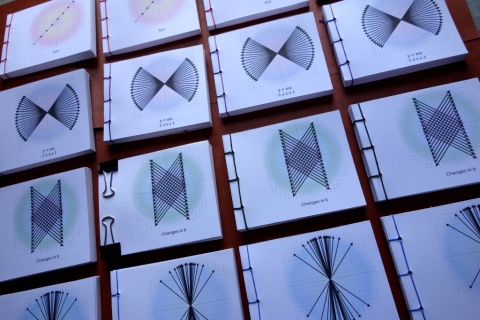My Do-It-Yourself Equation of the Line Flip Books are ready to share. I've been writing about these, on and off for months, but my work on them has been steady. My goal has been to create PDF pages that I can distribute on-line which a class of students can assemble in about 10 to 15… Continue reading The Animated Equation Book
Tag: Flip books
Flip Books, nearly done
I didn't think these would take so long to design and create. I thought I was starting with something easy. My endgame plan is to make flip books that show hypotrochoids, aka spirograph shapes. I thought that starting with something as straight forward as a straight line wouldn't take long. These books show variations of the equation of… Continue reading Flip Books, nearly done
Flip Books as a Bodacious Learning Tool
After all these years of teaching how to make books I have now become smitten with using books as a teaching tool. Yes, I know, using books for instruction is anything but a new idea. This said, flip books have captured my interest because they are fun and dynamic. Among other things, I'm pairing them up with… Continue reading Flip Books as a Bodacious Learning Tool
Flip-Book, Take #2
Am still trying to hone in on a way of making flip-books. This means creating templates in my graphics program as well as figuring out how I want to bind the books. There were too many things that weren't right about the Japanese stab-sewn binding that I've already written about, so I thought I would… Continue reading Flip-Book, Take #2




